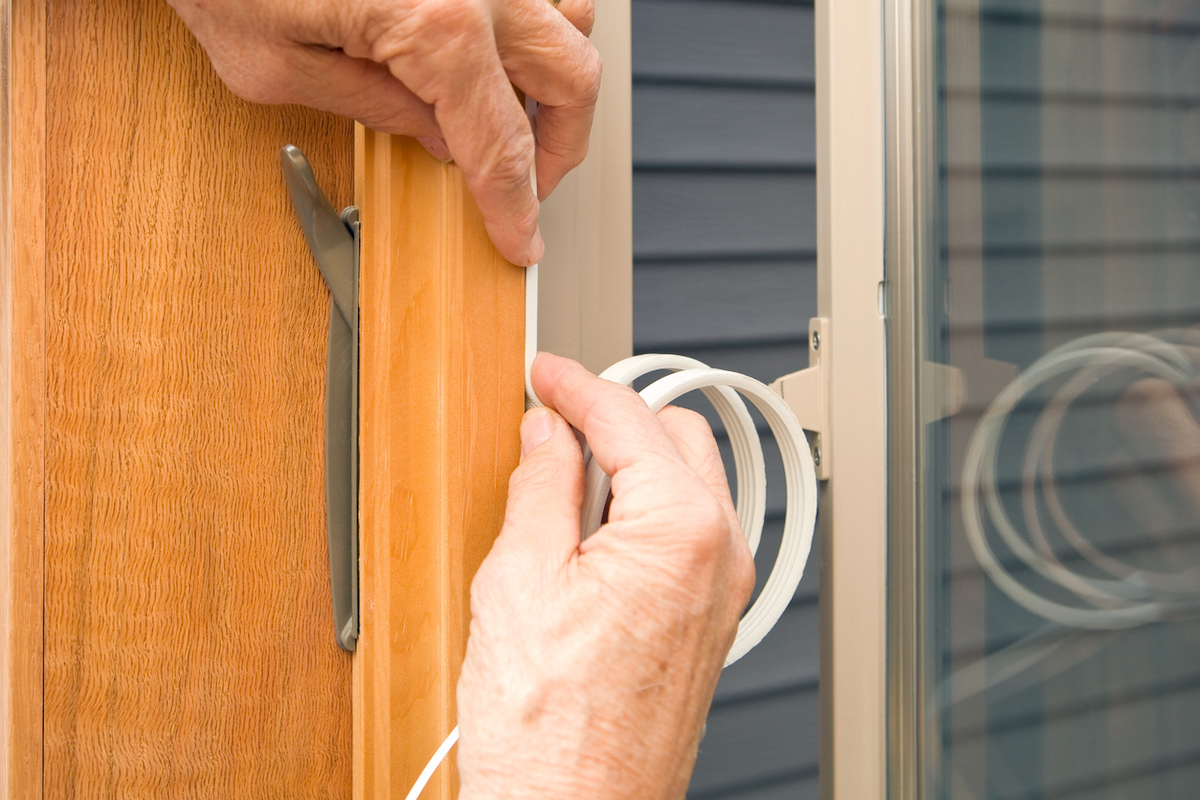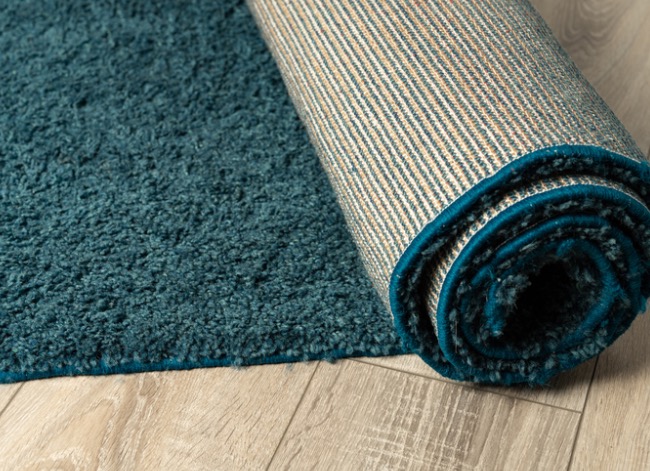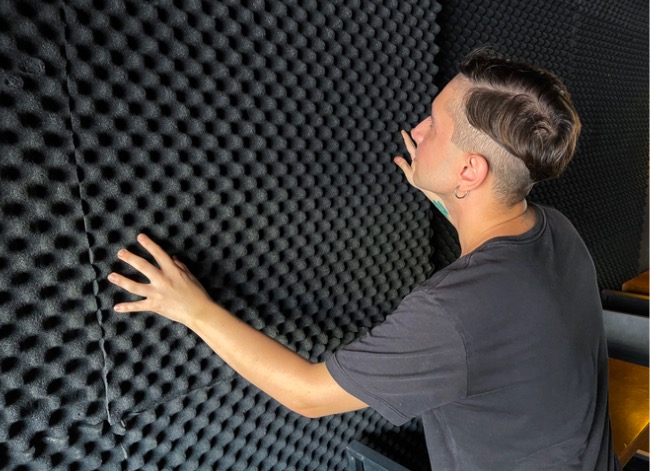

We may earn revenue from the products available on this page and participate in affiliate programs. Learn More ›
If your neighbor’s taste in music makes you cringe, it’s time for some soundproofing. Fortunately, there are many ways to absorb or block the din that creeps in through the windows, ceiling, and floor of your apartment. It might take some creativity and a little bit of DIY know-how, but if you’re wondering how to soundproof an apartment, we’ve got tips to make it happen.
Tools & Materials
Bobvila.com may earn a commission from purchases made through these links.
- Basic tool kit: screwdriver, hammer, level, tape measure
- Adhesive remover or sandpaper (optional)
- Weatherstripping
BEFORE YOU BEGIN
Before jumping into any of these projects, prep your space. Be prepared to rethink your decor and evaluate your space to make the most effective changes. But after that, the only thing left is to get started.
STEP 1: Seal doors and windows.
Gaps in windows and under doors leave just enough space for sound to get through. Install weatherstripping around windows and a door sweep under the front door to block or muffle sounds. Weatherstripping tape made of rubber, silicone, felt, vinyl, or foam is simple to use and great for putting a stop to all the noise. As you’re installing the weatherstripping, a putty knife can make it easier to remove the adhesive backing.
Caulking around the windows is another, longer-lasting option. This is an easy DIY, but you’ll need a caulking gun and a steady hand. (Renters may need their landlord’s permission to caulk the windows, so check the rental agreement.)
Sealing doors and windows comes with a bonus: energy savings. Sound isn’t the only thing creeping in through those gaps. When you close them up, you keep the cold air out in winter and the cool, conditioned air in all summer long.

STEP 2: Install soundproof curtains.
Soundproof curtains act as an additional barrier to sound and are one of the best ways to soundproof a room. Many also function as blackout curtains, keeping out sleep-disrupting sunlight.
Soundproof curtains come in different lengths and widths to fit most standard window sizes. In bedrooms, they have the added benefit of creating a more relaxing sleeping environment because they block street noise and bright lights. (See our full list of recommendations for the best soundproof curtains here.)
STEP 3: Incorporate rugs.
Sealing up gaps and putting up curtains will block sound, but blocking sound isn’t the only way to cut down on background noise. Absorbing sound is an effective method too, and rugs are great sound absorbers. Soundproof rugs typically have thick pile to help capture and dampen as much sound as possible. Use a pad or gripper to keep the rug in place and add yet more sound absorption.
Soundproof carpet can do the trick too. Even regular carpets can quiet things down by dampening noise and vibrations inside the apartment as well as those that come from below. Again, renters may need to consult the landlord before installing carpeting or taking other steps to soundproof an apartment.

STEP 4: Add bookshelves.
Bookshelves pull double duty—they provide more vertical storage and block and absorb sound coming through the walls. And once the shelves are lined with books, the books themselves form an additional barrier. (See our full list of recommendations for the best bookshelves here.)
Built-ins that cover entire walls offer the greatest soundproofing benefits, but even a small bookshelf can act as a sound absorber.
STEP 5: Hang wall art.
Typical drywall doesn’t provide much of a sound barrier, but photos, frames, and canvases can help dampen sound. If you’re looking for more sound insulation, opt for textiles, which offer more surface area to absorb sound waves.
Tapestries, macramé, quilts, and other fabric wall hangings provide a more effective sound barrier than standard wood or metal frames. You’ll need nails and a hammer (or Command Strips), a tape measure, and a level to make sure these soundproofing additions look their best.
STEP 6: Install acoustic wall panels.
Acoustic wall panels are specially designed to absorb sound. They are typically made of acoustic foam, and they come in many shapes and sizes. In fact, given the variety of designs and textures available, acoustic panels can be arranged to look like abstract works of art. Try mixing different sizes of panels in complementary colors to create a one-of-a-kind piece. Acoustic panels can also be used along the ceiling to dampen the noise from that neighbor who loves to wear high heels at midnight. (See our full list of recommendations for the best soundproofing materials here.)

STEP 7: Create white noise.
If your soundproofing efforts fail to achieve the quiet oasis of your dreams and you cannot locate the source of the leaks, try adding a little white noise to the mix. White noise contains multiple sound frequencies with equal intensities. Because white noise includes all frequencies, it masks other noises, making it harder to hear anything else.
Static on the television or radio, a running hair dryer, or a noisy dishwasher are all types of white noise. But you don’t need to run the hair dryer all night to get a comforting blanket of noise. Instead, opt for a white noise machine, which emits several types of white noise and lets the user control the volume and quality for the most soothing results. (See our full list of recommendations for the best white noise machines here.)
A soundproof apartment isn’t beyond your reach, nor does it require drastic changes to your life. Simple fixes like weatherstripping, a new bookcase, a white noise machine, or a strategically placed wall hanging can do wonders for the noise levels in your home. Depending on your budget, rental status, and location, more permanent fixes like thick carpeting, soundproofing curtains, and acoustic wall panels can also help insulate your home from unwanted sounds.
While these soundproofing tricks can make your home calmer and quieter, there’s only so much you can do on your own to keep out the racket of the world. If despite your efforts, your neighbors’ noises continue to disturb your peace, talk to them. Be polite but direct, and let them know what measures you’ve taken. If that doesn’t work, try approaching the landlord. Sometimes a reminder about quiet hours can get everyone on the same page.
